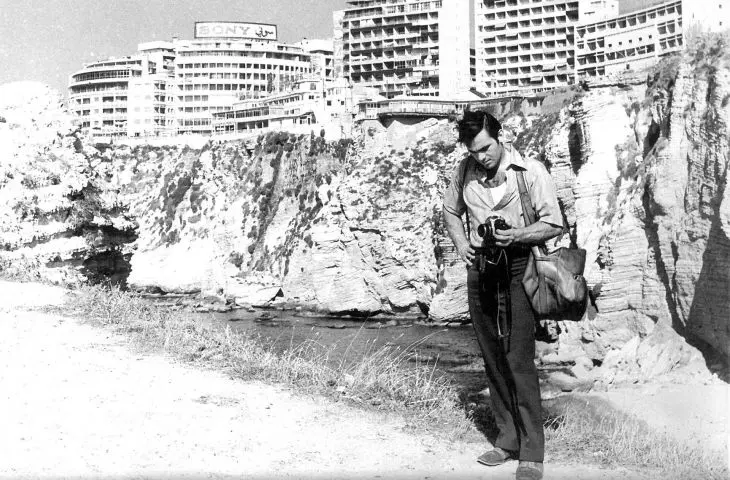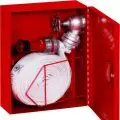Archival materials on the figure of Stanislaw Denieka are published in connection with the premiere of a film about the architect, organized by the Malopolska Chamber of Architects of Poland.
The memoir is from A&B 02/2022.
Experiences and personal experiences related to competition works in which I participated with Staszek as a team member, or those that I only observed as maturing concepts, on a daily basis being in the studio, I have in my mind.
But memory can be fallible, which is why I used help. Just five years ago, I wrote a short piece for "Arch" magazine [1/2017]. The occasion was the presentation of the SARP Honor Award to Stanislaw Deenka. Now it is different - we are writing about our unlamented colleague in the past tense, trying to summarize, or rather tell, his work.
Staszek did not follow in the footsteps of many other architects and did not publish a book documenting his own work, nor, as far as I know, did he leave any so-called compact print documenting his own rich activity in a cross-sectional manner. By the way, I imagine in the not-too-distant future a monograph describing his achievements, which could be entitled: "Stanislaw Deńko. My Vision." For the name of the company was not accidental either. Staszek was a visionary and was not afraid of such manifestations showing commitment to the view that architecture is first and foremost art, buildings are architectural works, and working on them is creative work requiring imagination, talent and vision.
In the aforementioned short text, I wrote that "the most important thing that happened to me thanks to him was experiencing the 'era of great competitions' (that's what we, his younger colleagues, called this period for ourselves)." Peak Leisure Club in Hong Kong, Parc de la Villette, La Grande Arche de la Defense in Paris." At the same time, this was the period of activity of the "old APy" (Academic Architecture Studio, of which Staszek was the head, located on St. Philip Street in Cracow).
Before the aforementioned "era of big competitions" came, Staszek had his diploma work behind him - a large, bold and visionary project (Experimental Residential Complex, Future Housing Estate for forty thousand people) and the first period of big international competitions (Residential District Vienna-South, 1970; Headquarters of the Government of Tanzania and the Tanu National Party in Dar Es Salaam, honorable mention, 1972; Embassy of the Republic of Poland in New Delhi, first prize and realization, 1973-1978; Tehran Library Competition, 1977; New Dagat-Dagatan Residential District in Manila, 1975). He had gained a great deal of design experience in these projects, and it was clear that he was in control of an extensive program and large scale. He also knew, and this was in keeping with his temperament, that it is the idea that counts - the idea that must remain clear and understandable, often in spite of overly finicky functional requirements, contradictions inherent in the guidelines and expectations of the organizers.
The Peak in Hong Kong
Authors: Stanisław Deńko, Artur Jasiński, Jacek Pencakowski, Wiesław Socha
model: Jan Hadt
Photo: Stanislaw Deńko
Despite this, he could not deny himself the personal pleasure of working out a part of a larger design with his own hands; he was able to focus on a selected fragment and persistently chisel its form. It must be remembered that those were the days of drawing designs in pencil and plotting them in ink on tracing paper or cardboard. Reproduction techniques were limited, preparing the charts and shipping a large package abroad were also not the easiest. He also oversaw the work on the models and made the elements himself. He also often photographed them. In general, however, he did not part with his sketchbook. He was very fond of thin tracing paper "from a roll", which he would unroll every now and then, superimposed on the previous drawing, to create another sketch. Or he would start all over again. He loved to "change."
The competitions were indeed big - international, worldwide, under the auspices of the International Union of Architects (UIA), with several hundred participants, among them the most prominent architects. But they were also attended by young people, representing new styles of thinking and design, even paving new paths of post-modern architecture: neo-modernism, post-modernism, deconstructivism.
Peak Leisure Club in Hong Kong, 1983
In the work prepared by Staszek and co-authors, a long building called the Aqueduct, suspended on poles above the mountainside, which gave it dynamism and expression, a solidly developed functional layout was evident. In the form, one can see the influence of the Japanese variety of modernism (I remember conversations about it) and the postmodern movement of the plans of the accompanying elements (a moved square, a pierced, incomplete circle). And although the work was built very rationally, it had an interesting symbolic motif - a watercourse on the roof flowing down to the area below the building.
The Peak in Hong Kong, UIA Competition
© Private Archive
This particular competition was probably the most important experience because of the surprise of Zaha Hadid's winning work, for us it was even unreadable, we did not understand it. Because how were we supposed to know its sources: deconstructivism nurtured in the London AA on the basis of revolutionary Russian constructivism? With time, we learned more about the author herself and her concepts of new architecture. Despite this, her work was long considered (not only in Poland, by the way) a manifestation of superficial, "cartoonish" fashion. It should be remembered that the 1980s in Poland was a time of martial law, persecution of the democratic opposition and widespread censorship. International architecture with its artistic ideas circulating across borders was a window to the world.
The Peak in Hong Kong, UIA Competition
© Private Archive
Parc de la Villette, 1983
As I recall, the competition took place shortly after the Peak Leisure Club. The task was clearly formulated: the organizer, the French government, was commissioning a 21st century park, but the whole intellectual setting introduced a state of uncertainty. Staszek proposed a kind of megastructure - a layout of blocks of volumes and greenery that intermingled on the principle of quarters of development. It was a time of renewal of urban planning, rejection of detached blocks of flats, Corbusier's version of a city of sunshine and greenery. This project is not on Vision's website, nor is it in other presentations. I guess he decided it "didn't work out."
Parc de la Villette was a valuable experience. Bernard Tschumi's work was clear in its visual layer, but it could be interpreted freely, the crazy red, very photogenic objects (follies) were reminiscent of the machines of constructivism. We witnessed the development of deconstructivism, this time in the French version, created in collaboration with philosophers fashionable at the time. Today everything is clear, then it represented an unknown future.
Grande Arche de la Fraternité, La Défense in Paris - the Great Arch of Brotherhood
Authors: Stanisław Deńko, Jacek Pencakowski, Piotr Wróbel
© Private Archive
La Grande Arche de la Defense in Paris, 1982.
The competition was one of the great projects initiated by then-President François Mitterand. The realization was to become a new emblematic building of Paris pretending to be the capital of Europe again.
From the beginning, Staszek's work gave the impression of a successful work. It was convincing in its simplicity and synthesis. Even the theory he created for it seemed natural, pragmatic, based on the clear premises of architectural-urban composition theory. His idea was to create an arch-gate, and at the same time to create a kind of super-space enclosed within the building, defending itself from the chaos of the outer forms of the La Defense development. This was confirmed by the perspective drawn into the primer provided by the organizers, on which a blank space was left for the proposed building. I prepared this drawing with pleasure, firstly because the project enjoyed its class (it had some power in it), and secondly it freed me from the agony of creating a perspective good enough to meet the concept.
Grande Arche de la Fraternité, La Défense in Paris - Grand Arch of the Fraternity
Authors: Stanisław Deńko, Jacek Pencakowski, Piotr Wróbel
© Private Archive
Johann Otto von Spreckelsen's winning design in the spirit of monumental neo-modernism, a gateway hollowed out in the minimalist geometry of a megastructure, was clear to us. We admired it for its finesse, felt satisfaction that the Danish architect had followed the same path, and at the same time a kind of disappointment that it was so close. Staszek later turned the form of La Grande Arche into a logo, which is still with us today.
Finally, one caveat: what has been written here is personal and in no way claims objectivity. This is how I saw it and remembered it. Of course, the facts should be right, the rest comes from direct experience and personal post thoughts. Some may have emerged only years later, and some are only possible from today's perspective. It cannot be otherwise. As you can see, truth is divisible, it is made up of parts, it is also changeable, it is good if it enlarges, it grows with minor truths, it adds up.
Grande Arche de la Fraternité, La Défense in Paris - Grand Arch of the Fraternity
Authors: Stanisław Deńko, Jacek Pencakowski, Piotr Wróbel
© Private Archive





































